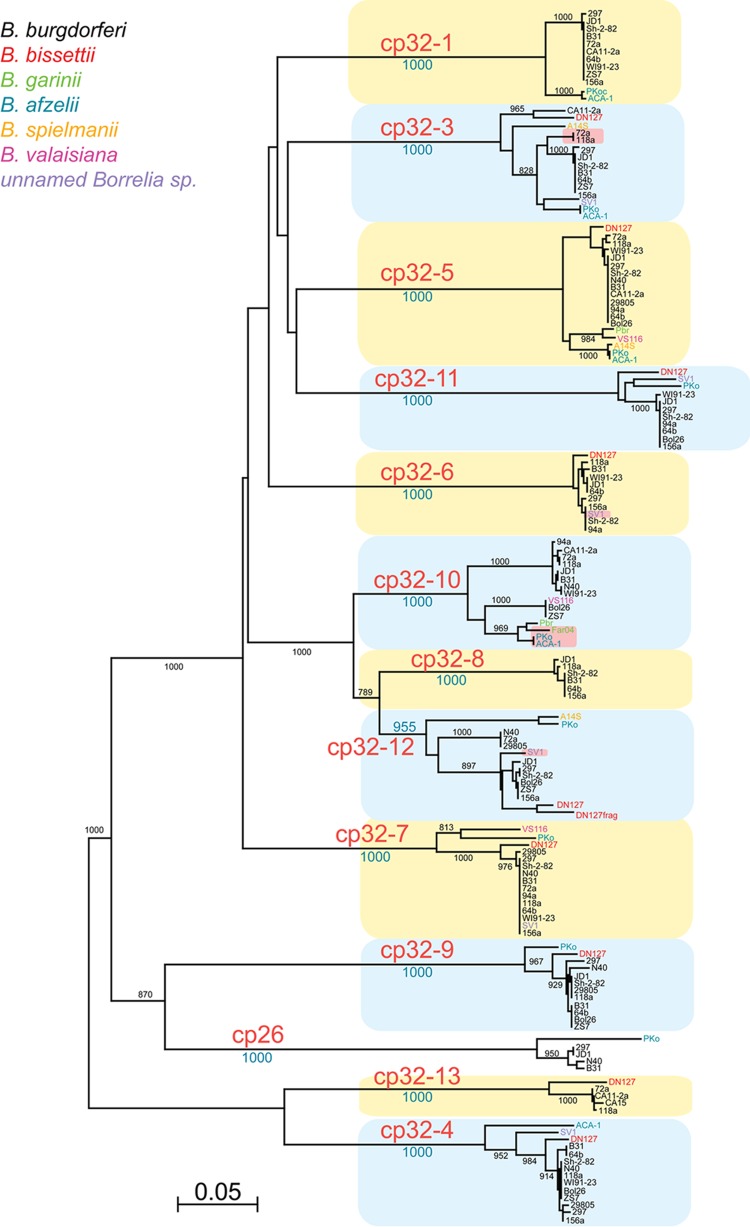Fig 1.
Neighbor-joining tree of the ParA-like proteins encoded on cp32 elements. The tree was constructed from all the proteins encoded by the parA-like genes of the cp32s of the sequenced B. burgdorferi sensu lato genomes and those known from strains CA15, Sh-2-82, and Far04. Numbers on the tree branches are bootstrap support values from 1,000 trials. Blue and yellow boxes highlight the different sequence types (tree branches) for the cp32 ParA proteins. These types correlate with episomes named in large red type. The species which harbored each cp32 are indicated by the color of the strain name at the right branch tips (see color key in upper left of figure). The DN127 protein labeled DN127frag in the cp32-12 branch is a ParA fragment from the DN127 cp32-Quad element. All the replicons in the figure carry highly related complements of non-partition cluster genes, except for seven “lp32” plasmids, noted by a pink background in the figure, which encode cp32-like ParA proteins but do not carry erp sequences (these will be described elsewhere [S. Casjens, unpublished data]). Replicon cp26 is an unrelated, universally present circular “plasmid” and is shown only for reference. Bar, 0.05 fractional change.

